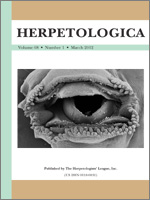The loss and fragmentation of pristine habitat restrict specialized species to remnants of original habitat patches in a less suitable landscape. This may lead to a genetic differentiation of the subpopulations and to a decline in biodiversity. We used seven microsatellite markers to examine the genetic population structure of the Grass Snake, Natrix natrix, sampled in remnants of pristine habitat in a former wetland in the Swiss lowlands and in a rural valley in the Alps. On a regional level, the population structures of N. natrix in these two areas were compared with that of Grass Snakes living in an intensively used agricultural area. The three study areas were 30–100 km apart, but were interconnected by the river Aare. At the local scale, no genetic differentiation was found in either of the N. natrix populations inhabiting the rural alpine valley or the intensively used agricultural area. However, two subpopulations in the former wetland area were genetically differentiated with a low but significant measure of genetic differentiation between subpopulations, FST. This slight genetic differentiation can be explained by isolation by distance. At the regional scale, we found significant genetic differentiation between N. natrix populations inhabiting areas separated by 30–100 km. The genetic structure was highly related to isolation by distance with 85% of the among-populations genetic variance explained by the geographical distance between subpopulations. Euclidean distance explained genetic differentiation of Grass Snake populations better than the distance following watercourses. Our findings indicate regular gene flow between N. natrix subpopulations and show that this species also moves across intensively used terrestrial habitat. The genetic structure of Grass Snakes is mainly affected by geographic distance, while human activity and habitat alteration do not seem to reduce the snakes' movements. Our results suggest that conservation actions in landscapes altered by humans should focus on the maintenance of a habitat mosaic with anuran breeding ponds and adequate oviposition sites.
How to translate text using browser tools
1 March 2012
Grass Snake Population Differentiation over Different Geographic Scales
Barbara Meister,
Sylvain Ursenbacher,
Bruno Baur
ACCESS THE FULL ARTICLE

Herpetologica
Vol. 68 • No. 1
March 2012
Vol. 68 • No. 1
March 2012
Grass Snake
isolation by distance
microsatellite DNA
Natrix natrix
population structure




